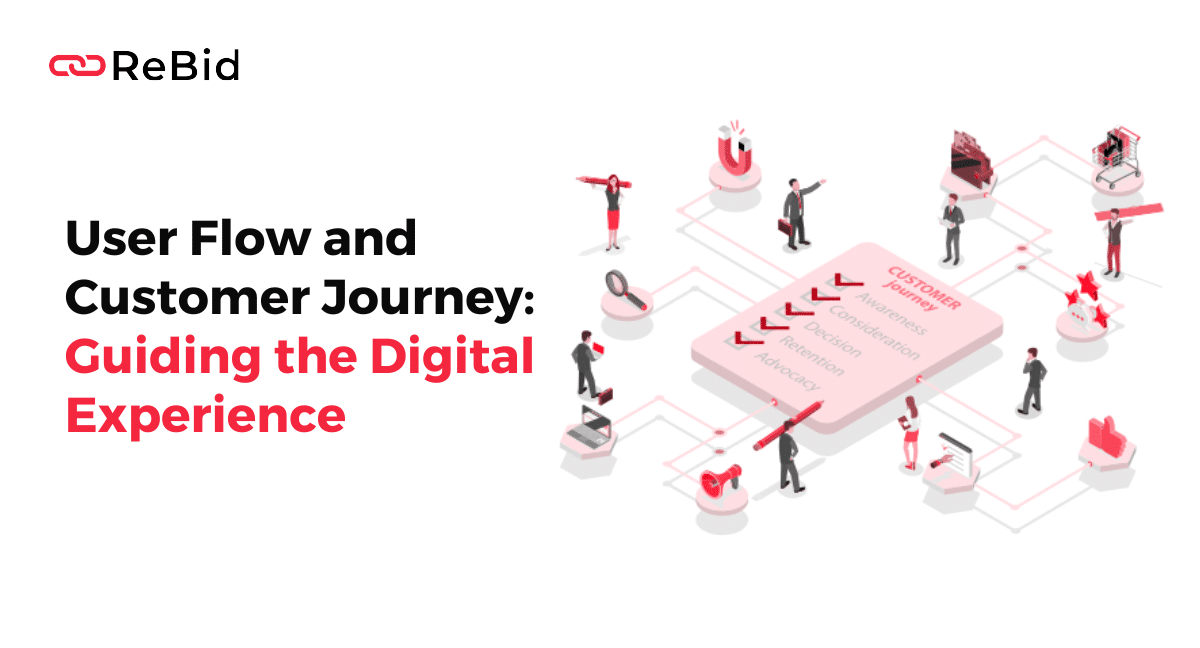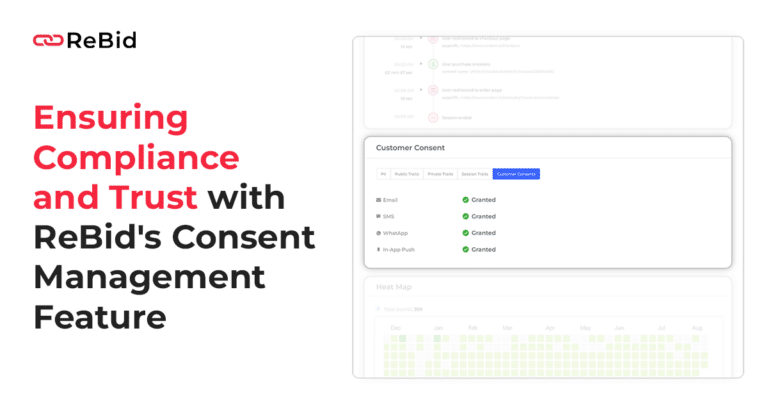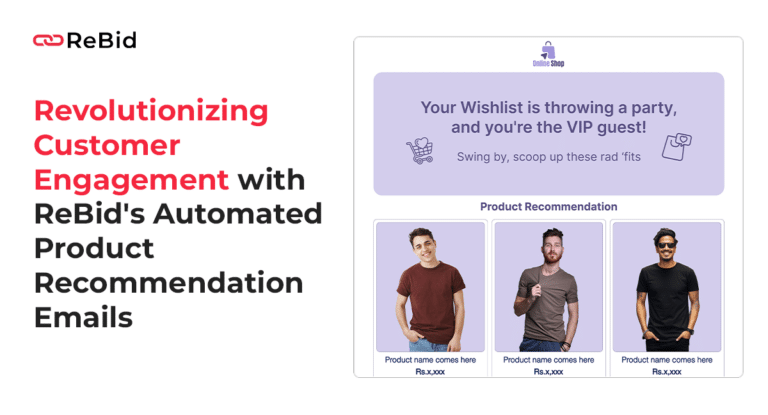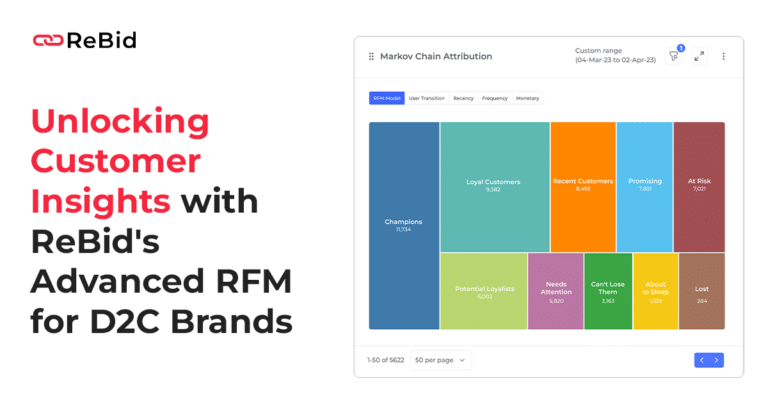Understanding the User’s Perspective
User Flow and Customer Journey – Picture yourself stepping into a store, brimming with anticipation to complete a purchase, only to be met with an enigmatic arrangement and an absence of helpful personnel. Exasperating, isn’t it? Just as in the tangible realm, online users yearn for a frictionless encounter when venturing onto a website. As astute marketers, it becomes imperative to immerse ourselves in the mindset of our intended audience and genuinely grasp their vantage point.
One approach that facilitates this comprehension is conducting comprehensive user research. This entails amassing profound insights into the desires, requirements, and vexations experienced by our users. By investing time to attentively listen and comprehend their encounters, we can expertly tailor our digital strategies accordingly. For instance, through user research a beauty brand might unearth that its target demographic highly esteems environmentally-friendly packaging choices. Armed with this invaluable knowledge, they have the capacity to renovate their website’s aesthetic to prominently showcase their sustainable practices—a move designed specifically to entice eco-conscious consumers who are attuned to such matters. Appreciating the unique perspective of our users empowers us immensely by enabling us to craft a website that strikes deeper chords within our audience’s hearts and minds.
• Conducting comprehensive user research allows us to gain insights into the desires, requirements, and vexations of our users.
• By investing time to listen and comprehend their encounters, we can tailor our digital strategies accordingly.
• For example, a beauty brand might discover through user research that their target demographic highly values environmentally-friendly packaging choices.
• Armed with this knowledge, they can renovate their website’s aesthetic to showcase sustainable practices and attract eco-conscious consumers.
• Appreciating the unique perspective of our users empowers us to craft a website that resonates deeply with our audience.
Mapping Out the Digital Experience
The vast and ever-changing digital landscape presents a perplexing challenge for marketers, who require a well-defined roadmap to navigate through its intricate paths. A clear understanding of the digital experience is crucial in enabling businesses to comprehend their customers’ desires and deliver interactions that hold immense value. Picture this: you venture onto a website with specific information in mind, only to be bombarded by cluttered menus and bewildering navigation. Overwhelmed with frustration, you swiftly bounce off the site and seek refuge with a competitor. This is an all too familiar scenario encountered by countless users, underscoring the paramount significance of meticulously devising an impeccable digital experience. By creating an intricately detailed map centered around users, businesses can pinpoint pivotal touchpoints while ensuring that their customers embark on an enchanting journey devoid of any stumbling blocks.

One highly effective approach to skillfully charting the course of the digital experience entails delving into the mindset and pain points experienced by users. Place yourself within your customers’ shoes; ponder over what they ardently yearn for, which obstacles impede their progress, and how you can ingeniously offer solutions beyond compare. To illustrate this point further, consider yourself as an e-commerce retailer specializing in footwear. Your target audience comprises busy professionals constantly on-the-go seeking convenience above all else. Through mapping out their digital voyage, you might astutely discern that they place great emphasis on immediate access to product information coupled with utmost ease-of-use features at every turn. As a result-oriented response to this revelation unfolds before your eyes: optimize your website’s interface by providing crystal-clear and concise descriptions of each product at hand while offering seamless filtering options alongside streamlining the checkout process like never before witnessed! Rest assured – such user-centric actions will elevate not just mere satisfaction but considerably bolster conversion rates exponentially!
• A clear understanding of the digital experience is crucial for businesses to comprehend their customers’ desires and deliver valuable interactions.
• Users often become frustrated and leave a website if they encounter cluttered menus and confusing navigation.
• Businesses can create an impeccable digital experience by mapping out users’ journeys and identifying key touchpoints.
• To effectively map out the digital experience, it’s important to understand users’ mindset and pain points.
• For example, an e-commerce retailer specializing in footwear might discover that busy professionals value convenience above all else.
• By optimizing their website with clear product descriptions, easy filtering options, and streamlined checkout processes, this retailer can greatly improve customer satisfaction and conversion rates.
Identifying User Pain Points
The process of identifying user pain points is vital for optimizing the user experience (UX) and enhancing customer satisfaction. By comprehending the aspects that vex or irritate users, marketers can strategically enhance their websites or digital products. An effective approach entails engaging in user research, which involves directly gathering valuable insights from the target audience.
Imagine operating a beauty e-commerce website and observing a significant bounce rate on your product pages. One plausible pain point could be the absence of comprehensive product descriptions. To validate this presumption, you could engage in user surveys or interviews to gather constructive feedback. By attentively listening to your customers, you may unearth their desire for more information regarding ingredients, application techniques, and customer reviews. Equipped with these enlightening perspectives, you can then reimagine your product pages to cater to their requirements. This will ultimately result in improved conversions and heightened customer satisfaction levels. Essentially, recognizing user pain points serves as an initial stride towards constructing a captivating digital experience that resonates profoundly with your audience
• User research is a crucial step in identifying pain points
• Engaging in user surveys or interviews can provide valuable insights
• Lack of comprehensive product descriptions may be a potential pain point for an e-commerce website
• Gathering feedback from customers can reveal their desire for more information on ingredients, application techniques, and customer reviews
• Reimagining product pages to cater to these requirements can improve conversions and customer satisfaction
Creating a Seamless Navigation
As marketers, we grasp the profound significance of a navigation experience that leaves our users perplexed yet intrigued. When individuals venture onto a website, they yearn for expeditious and effortless access to the desired information. Picture this intriguing scenario – you chance upon an enticing website, brimming with potential. With eager anticipation, you fervently click on the link, only to become entangled in an enigmatic web of bewildering menus and disarrayed connections. Exasperating indeed!
Henceforth, crafting an uninterrupted navigation system assumes paramount importance in retaining your users’ attention and contentment. By arranging your website in a cogent and user-centric manner, you not only facilitate visitors’ quest for their sought-after treasures but also amplify their overall encounter manifoldly. Envision your website as an exquisitely crafted treasure map; adeptly guiding your users from one page to another with seamless ease while effortlessly steering them towards the invaluable content they seek so ardently.
• A seamless navigation system ensures that users can easily access the desired information on a website.
• Users become frustrated when they encounter confusing menus and disorganized connections.
• Crafting an uninterrupted navigation system is crucial for retaining users’ attention and satisfaction.
• A user-centric approach to website design facilitates visitors’ search for specific content.
• The goal is to guide users from one page to another with ease, leading them towards valuable content.
Optimizing Website Responsiveness
Have you ever ventured into the depths of a website, only to be bombarded with sluggish loading times and an anarchic mishmash of text and images? It’s undoubtedly vexing, isn’t it? Well, don’t fret because you’re not alone in this perplexing predicament. In our contemporary era of rapid digital progression, users crave websites that effortlessly adapt and optimize themselves for an unimpeded browsing extravaganza. As a marketer, it becomes your solemn duty to ensure that your website measures up.
Responsive design holds the key to unlocking the optimum level of website responsiveness. Essentially, it grants your website the ability to morph its layout and functionality depending on the device through which it is being accessed. Be it a traditional desktop computer or the sleek embrace of a tablet or mobile phone – rest assured that your users will always be treated to an uninterrupted symphony of seamless exploration. Just take a moment to ponder over how many instances you’ve grappled with incessant zooming in and out while trying desperately to decipher content on some ill-equipped website via your smartphone. Suffice it to say, such encounters are far from delightful; thus making them something one would never wish upon their cherished audience. By embracing responsive design principles wholeheartedly within your web architecture, you can effectively bypass these exasperations altogether – leaving behind nothing but engaged and utterly satisfied visitors in its wake
• Responsive design allows your website to adapt and optimize itself for different devices
• Users can have a seamless browsing experience on desktop computers, tablets, and mobile phones
• No more zooming in and out or struggling to read content on ill-equipped websites
• Embracing responsive design principles ensures engaged and satisfied visitors
Enhancing User Engagement
The enigmatic nature of user engagement is a crucial component in the realm of triumphant digital experiences. It encompasses the perplexing actions and interactions that users partake in when navigating through a website or application. In order to amplify this user engagement, marketers must diligently concentrate on forging an all-encompassing and spellbinding experience that effectively captures and retains the undivided attention of these users.
One exceptionally efficacious method to achieve this desired outcome is by seamlessly integrating interactive elements into the very fabric of the website or application. For instance, incorporating quizzes, polls, or games can ingeniously encourage users to actively participate and wholeheartedly engage with the captivating content at hand. These interactive facets not only heighten enjoyment within the user experience but also furnish invaluable insights into user preferences and behavioral patterns.
Moreover, storytelling serves as yet another potent tool for augmenting user engagement rates. By expertly weaving together riveting narratives within the content structure itself, astute marketers have been able to forge deep emotional connections with their target audience members: evoking sentiments of curiosity, empathy, or even unbridled excitement along their digital journey. Whether it be through an enthralling blog post, a visually stunning video production, or even an engaging social media campaign; storytelling possesses unparalleled potentiality when it comes to effectively conveying messages whilst leaving indelible imprints upon those who encounter them. As one illustrative example showcases: A clothing brand could artfully share anecdotes surrounding real customers whose lives were positively impacted by their products; thus sparking inspiration among potential buyers whilst fostering genuine engagement.
To summarize succinctly: The ultimate enhancement of user engagement necessitates judicious employment of both interactive elements and masterful storytelling techniques alike. By crafting an immersive environment laden with intrigue at every turn; shrewd marketers are able to establish powerful bonds with their esteemed audience members – thereby cultivating heightened brand loyalty statistics alongside superior conversion rates throughout – ultimately paving way for comprehensive business triumph.
• Incorporating quizzes, polls, or games can encourage active participation and engagement with the content
• Interactive elements provide insights into user preferences and behavioral patterns
• Storytelling creates emotional connections with the audience
• Riveting narratives in blog posts, videos, or social media campaigns evoke curiosity, empathy, and excitement
• Sharing anecdotes of real customers positively impacted by products sparks inspiration and fosters engagement
• The ultimate enhancement of user engagement requires both interactive elements and storytelling techniques
• Crafting an immersive environment laden with intrigue establishes powerful bonds with the audience
• This leads to heightened brand loyalty statistics and superior conversion rates
Improving Conversion Rates
When it comes to improving conversion rates, the perplexing reality is that there is no universally applicable solution. Every business possesses its own distinctive characteristics, and what may prove effective for one may not necessarily yield the same results for another. Nonetheless, amidst this perplexity lies a burst of tried and tested strategies capable of enhancing conversions across the board.
One pivotal factor in propelling conversions forward resides in cultivating trust among your users. The enigmatic nature of human behavior dictates that individuals are more inclined to make purchases or engage in desired actions when they harbor unwavering confidence in your brand and its offerings. A compelling technique to instill such trust involves showcasing social proof through avenues like customer testimonials or online reviews. By allowing potential customers to witness positive experiences others have had with your product or service, you are proactively fostering faith in your brand’s credibility, thus augmenting the likelihood of conversion. Furthermore, an efficacious strategy encompasses offering a money-back guarantee or a free trial period as it mitigates risk for potential customers, prompting them to take that decisive leap towards conversion.
In addition to establishing trustworthiness, optimizing the checkout process wields tremendous influence over conversion rates. Elaborate and convoluted checkout procedures serve as prime catalysts for cart abandonment – an unfortunate outcome we all wish to avoid. Thus emerges the imperative need to streamline this process by eliminating superfluous steps and reducing form fields where possible – a seemingly mundane yet impactful undertaking. Moreover, affording multiple payment options tailored towards diverse user preferences stands paramount on this journey toward higher conversions: credit cards may be favored by some while alternative methods like PayPal or Apple Pay resonate better with others. Catering comprehensively via varied payment alternatives not only fulfills distinct user needs but also increases the chances of successful conversion.
In conclusion, navigating through the labyrinthine realm of boosting conversion rates requires embracing both befuddlement and explosiveness within our strategies’ fabrications – recognizing the uniqueness of each business while harnessing the power of proven tactics. By weaving trust through social proof and offering risk-reducing incentives, as well as optimizing checkout processes and accommodating diverse payment preferences, we unlock a world of possibilities where conversions flourish in their enigmatic burstiness.
– Cultivating trust among users is crucial for improving conversion rates
– Showcasing social proof through customer testimonials and online reviews can instill trust in your brand’s credibility
– Offering a money-back guarantee or a free trial period can mitigate risk for potential customers and encourage conversion
– Optimizing the checkout process by eliminating unnecessary steps and reducing form fields can prevent cart abandonment
– Providing multiple payment options tailored to user preferences increases the chances of successful conversion.
Measuring User Satisfaction
Measuring user satisfaction is an enigmatic and capricious endeavor, an essential pursuit within the realm of any triumphant digital experience strategy. Forsooth, comprehending the degree to which users are gratified with your website or app can unearth opportunities for advancement and necessitate vital alterations. In this cutthroat market, possessing a functional online domain or application alone will not suffice. Nay, you must ensure that it bestows upon its visitors an extraordinary user experience that compels them to return time and time again.
But how does one quantify this elusive notion of user satisfaction? One method entails conducting audacious surveys or interviews with your intended audience. By amassing feedback directly from these individuals, you can glean invaluable insights into their preferences and aversions regarding your digital platform’s stature. For instance, a travel agency may stumble upon revelations that users find their booking process perplexing and onerous. Armed with such knowledge, they can streamline the procedure by rendering it more accessible and intuitive.
An alternative approach to gauging user satisfaction involves scrutinizing behavioral patterns and engagement metrics exhibited by users navigating through your virtual haven. These metrics encompass temporal longevity spent perusing your site’s offerings, as well as pages traversed during each visitation; moreover, they encapsulate actions undertaken by users—whether they culminate in consummating a purchase or completing contact forms et alia! By vigilantly monitoring these indicators of interaction between users and your online sanctuary or application, you acquire enhanced comprehension concerning bottlenecks impeding smooth navigation along the precipice of ultimate gratification in their quest for fulfillment within cyberspace’s labyrinthine realms. Consider this: An e-commerce emporium might discern unnervingly high bounce rates afflicting their product pages—an ominous signifier suggesting despondent souls failing expeditiously locate desired information therein! Yet fear not—for solutions abound! Rectifying such disconcerting issues could entail elucidating product descriptions or augmenting the trove of customer reviews, thereby endowing users with an enhanced experience and elevating satisfaction levels to unprecedented heights.
• Conducting surveys or interviews with users to gather feedback and insights
• Scrutinizing behavioral patterns and engagement metrics of users on the website or app
• Monitoring metrics such as time spent perusing, pages visited, and actions taken by users
• Identifying bottlenecks and issues that hinder smooth navigation and satisfaction
• Making necessary improvements based on user feedback and data analysis
How can I gauge user contentment?
The measurement of user satisfaction is a convoluted endeavor, encompassing an array of methodologies including the administration of surveys, feedback forms, meticulous user testing, and the astute analysis of behavioral data.
Why is comprehending the user’s vantage point imperative?
Grasping the intricacies embedded within the user’s perspective is pivotal as it enables one to tailor their digital landscape or website in order to meet their distinct needs and expectations. Inevitably culminating in heightened levels of gratification for users.
How can I fashion a blueprint for the digital expedition?
Constructing a comprehensive map that charts out each stage within the digital odyssey requires discerning scrutiny. This entails dissecting and scrutinizing every touchpoint encountered by users while unraveling intricate threads interwoven across various facets comprising your online domain.
How can I unearth areas where users face tribulations?
Unearthing those exasperating pain points that plague users necessitates drawing insights from an assortment of sources such as eliciting feedback directly from them, conducting rigorous usability tests, vigilantly monitoring behavioral patterns ingrained within data sets, all while meticulously analyzing customer support interactions.
What factors should be taken into account when crafting seamless navigation experiences?
When striving to craft frictionless navigational journeys for users, paramount considerations revolve around organizing your website with utmost lucidity and intuitive structure. This involves employing labels that are both explicit and descriptive whilst minimizing superfluous clicks required to arrive at desired destinations; granting effortless access to critical pages or features along this voyage.
How can I invigorate user engagement?
User engagement flourishes when one proffers content that is not only informative but also germane. It further thrives upon the infusion of interactive elements such as captivating quizzes or engrossing polls, which rouse users to actively participate through comments or sharing on social media platforms. Personalization too plays a pivotal role in elevating user experiences to unprecedented heights.
What steps can be taken to bolster conversion rates?
Augmenting conversion rates necessitates laser-like focus towards optimizing call-to-action buttons; streamlining the checkout or sign-up process for maximum expediency; building trust by showcasing compelling social proof and testimonials; while incentivizing conversions through irresistible discounts and other enticements.





